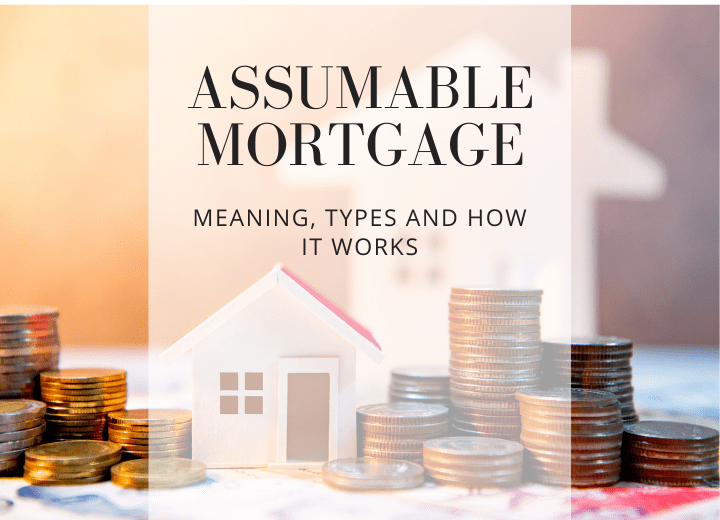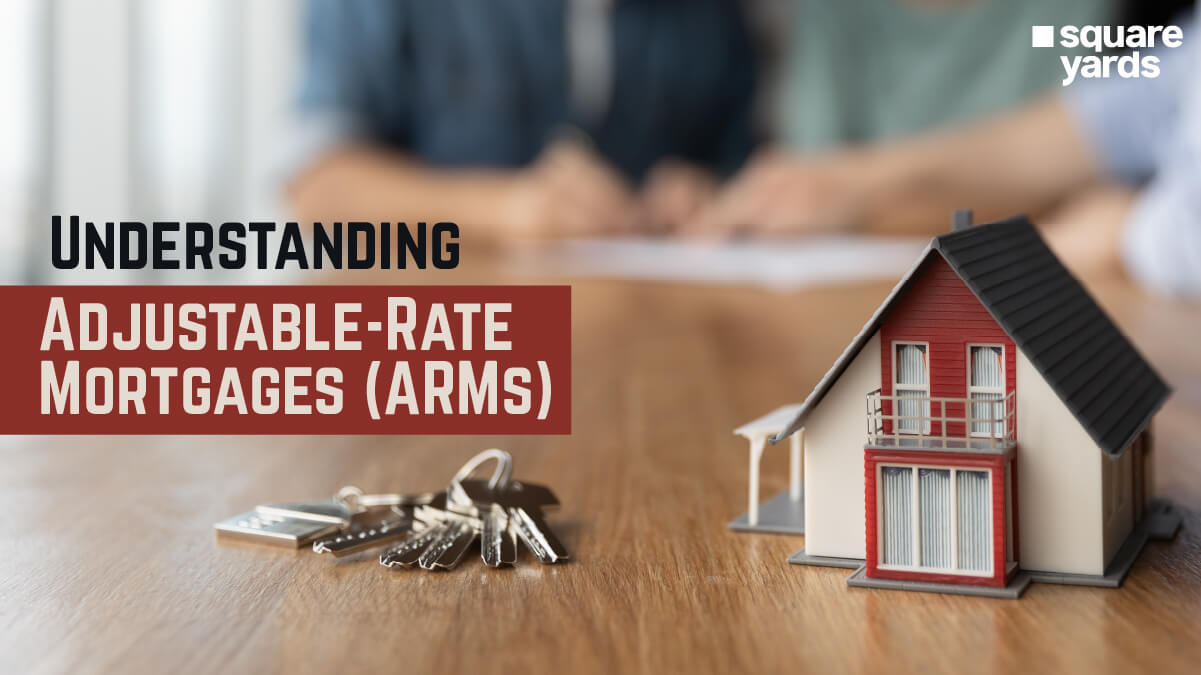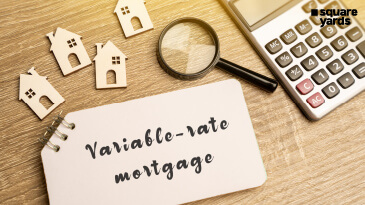Buying a home in Canada is a highly appealing proposition that leads to dealing with financing and taking on a mortgage. Having said that, an assumable mortgage is one most of you might not be aware of. So let’s learn about the assumable mortgage in Canada and how it can benefit you in interest rates and repayments.
While purchasing goods, most of us consider opting for pre-owned things such as second-hand cars, used books or sometimes, worn clothing as well. So why can’t we go for a used mortgage when it comes to buying a home? Sounds unusual? Well, it isn’t.
We are talking about assumable mortgages – the idea is not very common but could prove to be a real find for you – especially if you’re planning to buy your first home in Canada. Still confused? Well, the below article addresses the meaning of assumable loan, its types, merits and demerits.
What is an Assumable Mortgage?
An assumable mortgage is an existing loan held by sellers that allows buyers to take over. It allows a buyer to assume everything about their seller’s mortgage – from the interest rate and repayment tenure to current principal balance and other terms. It underlines taking over the seller’s debts rather than acquiring a brand-new mortgage.
Under assumable mortgages, home-buyers assume the liability and responsibility for the mortgage while taking over from the sellers. The borrower (the seller) is replaced by a new individual (the buyer) and the seller is released from further authority. Assumable mortgage loans cost less to the buyers and are simpler and easier to manage for them.
How Does an Assumable Mortgage Work?
While assuming a mortgage loan, the seller transfers the balance of their loan to the buyer and the latter will be further responsible to make the remaining payments. This simply means that there will be the same rate of interest and monthly payments for the next borrower (the buyer).
The next borrower of the mortgage will have to pay off the equity of the previous one through a down payment or by using another loan.
How To Assume a Loan in Cases of Death or Divorce?
Assumable mortgages are not only for sale purposes. They can be taken over by family members as well in death or divorce cases. For instance, one can assume an existing mortgage loan from a family member or relative who is no more. If a couple gets divorced and during the proceedings, one of them is transferred the sole ownership of a property, they can assume the existing mortgage themselves.
However, in both cases, assumable mortgages are allowed if there is no assumption clause in the contract. In addition, there is no need for the new borrower to qualify for the mortgage to assume it in inheritance cases. Keep in mind to check the assumption clause
It is important to check an assumption clause in the mortgage contract to know if you can assume the mortgage. If the contract has this provision, you can transfer your loan to another person. Keep in mind that if it is allowed, the lender will look for the new borrower’s eligibility and requirements for the loan.
What are The Types of Assumable Mortgage?
Though all types of mortgage loans could have the assumption clause, there are typically three types of loans with this feature:
-
- FHA Loans: There are some specific criteria for both buyers and sellers to assume an FHA loan. Sellers must be living in the home as their primary residence for a particular period and buyers must follow the standard application process for FHA loans. You need to make a smaller down payment of 3.5% with a credit score of above 580 to apply for the loan. This makes it more affordable for first-time homebuyers.
- USDA Loans: Assuming a USDA loan make more sense, majorly during times of high-interest rates. In addition, there is no need for a down payment while assuming a USDA loan. However, one must have a credit score of at least 620. In addition, there are some location requirements and income limits to assume a USDA loan. Remember that it can be assumed with a new rate but in case there is a transfer between families, the rate and terms would be the same and there will be no eligibility requirements.
- VA Loans: Under VA Loans, the lender approves it first by checking your credit history as a borrower. Earlier, military and services members and their spouses could assume a VA Loan, however, now a buyer does not necessarily have to be a military or service member to apply for a VA loan assumption. Though there is no minimum credit score, buyers with a credit score of above 620 are looked for. VA loan assumptions also require a funding fee of 0.5%.
What are The Advantages and Disadvantages of Assumable Mortgage?
-
Advantages of Assumable Mortgage
- Increase the desire for your home: The homes owned by sellers with little equity and existing mortgage with a low rate appeal to the buyers more.
- No need for an appraisal: There will be no need for an appraisal in mortgage assumption which ultimately makes it easier to crack the deal. It saves the appraisal fee for the buyer which would be many hundred dollars. Buyers can still go for the appraisal independently to reduce the risk of overpaying for the property.
-
Disadvantages of Assumable Mortgage
- Limited to the current lender: Even if you are assuming a mortgage loan, you have to apply for it and meet the requirements of lenders since it is a newly originated loan. You cannot assume it without the consent of the lender. This restricts your option to find a lender of your choice.
- Chances for large down payments: In cases of sellers with ample equity, the buyer could have to make large down payments.
- The original buyers could still be responsible for the debts: If the buyer does not pay off the debts, the seller’s credit would certainly be affected. Moreover, if the buyer defaults and is not released from liability, the original borrower will have to suffer the damage of his or her poor credit rating.
How To Apply For an Assumable Mortgage?
It is important to get the approval of your lender first to apply for an assumable mortgage. Here are major steps on how to apply for an Assumable Mortgage:
-
- Make sure that you can assume the loan: The first step is to confirm that the mortgage loan is assumable. You can reach out to the lender of the current mortgage holder and make sure that he or she is allowing the loan assumption and your seller has been consistently making their loan payments.
- Be prepared for the closing costs: You know that you will be paying off a down payment depending upon the equality of your seller. In addition, there will be a need for paying closing costs when your assumable mortgage is approved by the lender. However, closing costs are usually lower in an assumable mortgage as compared to usual loans.
- Submit the application form: The submission process of assumable mortgage might vary from lender to lender. However, you generally need to submit a duly filled application form and other forms along with the identification proof.
- Close liability release with signature: Just like other types of home loans, you need to complete the paperwork in assumable mortgages once they are approved. It might comprise a liability release stating that the seller will not be further responsible for the loan.
Conclusion
Assumable mortgage loans are a great alternative to the usual conventional loans that undoubtedly cut down your expenses while home buying, serving as an incentive for home buyers – majorly in the cases of low existing interest rates. However, if you’re planning to assume a mortgage, we would suggest you consider the risk beforehand, for, there might be chances for a long-term financial strain.
You May Also Read :
| Apply For Vacant Land Mortgage | Vacant Land Mortgage |
| Alternative of Reverse Mortgage Loan | Reverse Mortgage Loan |
| Guide To Real Estate Mortgage Process | Real Estate Mortgage Process |
| Beware of Reverse Mortgage Scam | Reverse Mortgage Scam |
Frequently Asked Question (FAQs)
What is the meaning of an assumable mortgage?
In an ‘assumable mortgage’, an existing mortgage and its terms are transferred from the present owner to a buyer. The buyer can avoid getting a mortgage by taking on the outstanding debt of the prior owner.
Do you need a down payment to assume a mortgage?
Yes, the buyer is required to pay a down payment equal to the difference between the sale price and the mortgage if the price of the home is more than the balance of the loan.
Can I assume my parents’ mortgage in Canada?
Yes, one can as there is no boundation to even inform the lender about the same. The lender is content as long as the mortgage payments are timely and the ownership of the property has not changed.
Does Canada have assumable mortgages?
Yes, one can easily avail an assumable mortgage on fixed-rate mortgages in Canada.
Are CMHC mortgages assumable?
CMHC doesn’t work on assumable mortgages, it is solely based on the borrower’s eligibility and qualifications.
Can you give a current assumable mortgage to someone else?
Is it convenient to switch mortgages?
Yes, it is extremely convenient to switch mortgages.
How is an existing mortgage assumed?
The borrower must be approved by the lender in order to assume a loan. The borrower is required to pay a down payment equal to the difference between the sale price and the mortgage if the price of the home is more than the balance of the loan.
Is it possible to transfer a mortgage to someone else?
What occurs to current mortgages?
Your current property serves as security for the mortgage. Your legal representative will fully repay your current mortgage when you relocate. If you are purchasing a new home, you will need to begin a new mortgage and will still require borrowing to do so.
















